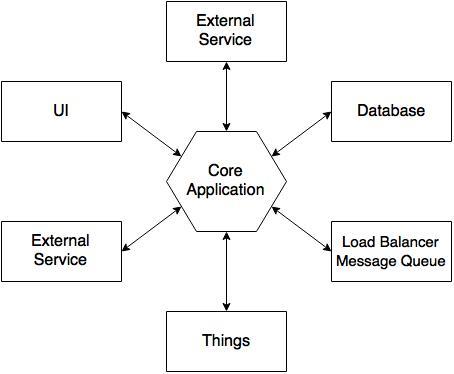One of the largest venture capitalists in Silicon Valley presents a program in its Podcast on this subject

We note that the subject of Microservice Architecture starts to pop up when one of Silicon Valley's biggest venture capitalists presents a program in their Podcast on just that subject.
I'm talking about A16Z, Andreessen and Horowitz, which is considered together with Sequoia Capital and Accel Partners as one of Silicon Valley's Top 3. Since when do venture capitalists understand Microservices?
Well, ever since the founders of these investment firms left their own tech companies (because they sold for a lot of money) and created their own funds.
We live in the age of computer-savvy investors, often more expert than the founders of top-tier university startups, the startups they invest in.
Just listen to the Podcast [1] to understand the symbolic meaning. Software Microservice Architecture is an advanced subject among architects and software engineers, and very few companies know what it is, let alone apply this philosophy to their software systems. Just listening to the podcast, and understanding what they say, is already a computer specialization class.
Microservices can be considered, in general, as a finer-grained SOA (smaller pieces). But what is SOA? It's Service Oriented Architecture, which is a way of organizing your service-oriented enterprise software systems that the software offers. SOA is a technology of over 10 years, and is used in some large corporations.
Visionnaire has been working with this for many years. In fact we can say that Visionnaire was born in this context. Before SOA there were WebServices, and before WebServices there were "Distributed Objects". Now we're talking about 20 years ago, exactly Visionnaire's age!
Are Microservices Distributed Objects With Another Name?
Some critics argue that Microservices is nothing more than the evolution of existing technologies from the past, but under another name. But not quite the case. There are similarities, which even from a theoretical point of view are many (because that is what one wanted to get in the past [2]), but there are many differences as well. As Adrian Cockcroft, who helped Netflix migrate to a Microservice Architecture that is now a worldwide reference [3], comments, we previously had much less processing power and much slower network speeds, and we wanted to pass everything in large quantities. data by an XML-based protocol. That has all changed and Microservices are a reality.
The term Microservices was introduced in 2005 [4] and is supported by well-known software authors [5] and [6]. The philosophy is that services should be small and protocols should be light, in this type of architecture there is a macro division of software that is called Hexagonal Architecture, where the core application is in the center and all other applications are around the integrating via Application Programming Interfaces (APIs), as shown in the following figure.

From there all other applications communicate with each other in a distributed, scalable way through APIs that can be published openly on the Internet.
It is precisely this philosophy that has made it possible for companies like Stripe (developer payments) and
Twilio (API telephony) to come into existence and be worth billions on the stock market today.
And the future?
Well, the future in enterprise software is Microservices. In fact it is already the present. But we see even more challenging things like Serverless Microservices and Amazon's AWS Lambda project [8]. This is a way for the corporate world to run faster and at least be at the same speed as startups that are already starting with new technologies.
And Visionnaire continues to follow its DNA, which is to be "beyond its time," [9] bringing to its customers what lies ahead in the future of software development, so they are not taken aback by the technological waves that be more productive by investing less resources and also ahead of their competitors.
Sergio Mainetti Jr. is Director and Co-Founder of Visionnaire.
Reference List
[1] a16z Podcast: All about Microservices.
[2] The Essential Distributed Objects Survival Guide.
[3] Netflix Open Source Software
Center.
[4] Wikipedia – Microservices.
[5] Microservices –
A definition of this new architectural term.
[6] Pattern: Microservices Architecture.
[7] Introduction to Microservices.
[8] Microservices without the Servers.
[9] Visão,
Missão e Valores da Visionnaire.




